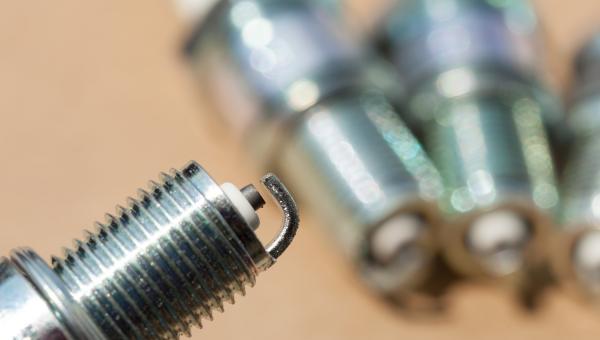Test Drive Notes Library
-
 Pros
Pros
- Not so quirky anymore. We always considered the “Disco” one of the odder animals in the automotive parking lot. Its shape was oddly tall and upright. Its switchgear was oddly… British. Its ergonomics quirky. Give Land Rover credit for really wanting to play in the luxury, mid size SUV market. They’ve sanded down the quirks and made a unique, luxurious cruiser.
- Quiet. This thing is like a vault. It’s very quiet inside the Discovery. Even on the highway, there’s little wind noise to speak of, which is all the more impressive in a vehicle that’s basically the shape of a box of Froot Loops.
- Style. While other Land Rover models, like the Defender, have embraced LR’s boulder-eating, go-anywhere heritage, the Discovery aims to suggest, what? Scandinavia? It’s surprisingly round-edged and spare. Inside, the spare-luxury theme continues with an airy cabin. It feels well crafted inside, with high quality, soft touch materials everywhere, and a warm, clean, classy elegance. Unlike other Land Rovers, mud would almost feel out of place in here.
- Powertrain. The Discovery’s upgraded V6 turbo is a huge improvement. Combined with a smooth, eight-speed transmission, it moves the Discovery easily and quickly. Power feels effortless. Passing is simple. Hills are no problem. A 48 volt electrical system makes the automatic start/stop feature unnoticeable. Mileage improves a bit to an EPA estimated 21 mph, which we didn’t come within 3 mpg of sniffing.
- Ride. We can’t remember the last time we drove a Discovery, but whenever it was, the ride was nowhere near this good. It now features optional air suspension that does a good job of isolating the truck from most road imperfections. An occasional pothole or bump shot through, but it’s really pretty smooth and comfortable.
- Seating. The front seats are extremely comfortable. The high seating position also makes visibility out the front quite good. The upright-ish windshield means the A-pillars don’t block a lot of the action. And the front-side windows are large, with a low belt line. Get in the back seat, and it’s not quite as luxurious. The seats there are fine, but they’re awkwardly low, sending your knees upward, and giving your thighs little support. There’s also a third row of seats for the kids. Getting back there is not easy, but it’s a useful feature for a lot of families. And it gives the Discovery a market advantage over, say, a BMW X5. With the third row of seats folded down, there’s a large cargo area, albeit with a fairly high loading floor.
- Uncluttered dashboard option. While the dashboard display is a video screen from which you can choose a number of formats, one setting in particular charmed us. It featured… almost nothing. To the far left you saw a clean, digital speed readout, a small gear indicator, and pretty much nothing else. The bulk of the dashboard display is reserved for safety alerts, when needed. The basic info was duplicated in the clear, bright head up display. In this age of busy, multiple screens with maps and navigation everywhere, we found it very peaceful to drive with minimal information.
- Standard safety. The Discovery is now fully up to date, with low and high speed automatic emergency braking, lane departure warning, blind spot monitoring, and an excellent, sensitive rear cross traffic alert system.
-
 Cons
Cons
- Body lean. When you have a vehicle that is, as we said, shaped like a cereal box. — tall and narrow — it’s hard to avoid body lean. And Land Rover didn’t. Driven moderately, around town, you won’t notice it. But head into any kind of turn with any kind of speed, and you’ll be reminded you’re driving a tall, heavy vehicle. This is an area in which a BMW X5 eats Land Rover’s lunch. To be fair, if the lunch was on top of an off-road mountain somewhere, the Land Rover would probably eat it.
- Screen interface. It’s better. It’s also bigger, at over 11 inches now, and looks completely appropriate for the vehicle. But it’s a little quirky. For instance, when you call up the map, you always have to dismiss the pop up that wants you to program in your destination. Ridding yourself of that screen requires you to press on a small arrow about a third of the way across the screen. We usually missed the arrow twice before getting it to go away. It became an annoyance. A little more work on real-world usability would benefit this system.
- Mileage. The new V6 is great. And it improves on the old V6’s mileage. But it only takes it from bad to below average. The EPA says to expect 21 mpg. We saw just under 18.
- Reliability. While our test car was perfect, major reliability studies have not been kind to Land Rover. It’s something many will consider when there are a lot of good options for mid size $70,000 SUVs.
- Rear styling. There was clearly an argument over styling at Land Rover, and the kid who went to art school won. Every time we see the rear end of the new Discovery, it reminds us of someone who got punched, badly, in the nose. It’s asymmetrical. We’ll let the art critics fight this one out, but for us, there's something not-pleasing about the lack of symmetry back there. Your thoughts?
Test Drive Notes Library
Get the Car Talk Newsletter
 Pros
Pros Cons
Cons


